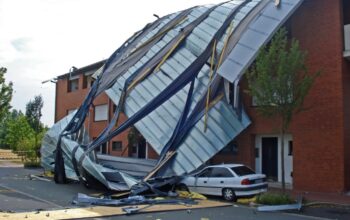No place is free of crime. Although many cities and towns have fewer instances of serious crimes, these places may still not be free of other offences such as petty theft, disorderly conduct, and harassment. This is why people should be aware of crime trends in the place they are residing or planning to move to. This way, they can evaluate the safety of the place.
The recent lockdowns caused by the COVID-19 pandemic overall brought down the crime rate in the local government areas (LGAs) in New South Wales. Even with the lockdown, crimes that often happen inside homes such as domestic violence and assault decreased.
However, now that the lockdowns are over and people have begun to go back to their pre-pandemic lives, local government areas in NSW have experienced changes in their crime rate. Here, we will analyse the two-year trends in two LGAs in NSW— Central Coast and Lake Macquarie.
Central Coast Crime Statistics 2023
2023 overview
The New South Wales Bureau of Crime Statistics and Research (BOSCAR) report revealed that there has been a significant change in certain crimes in Central Coast over the past two years.
| Offence Type | Oct 2020 – Sep 2021 | Oct 2021 – Sep 2022 | 2-year Trend |
| Intimidation, stalking and harassment | 2115 | 2550 | + 20.6% |
| Breaking and entering dwelling | 661 | 544 | – 17.7% |
| Stealing from dwelling | 527 | 471 | – 10.6% |
| Other theft | 629 | 524 | – 19.3% |
| Arson | 164 | 115 | – 29.9% |
| Malicious damage to property | 2576 | 2251 | – 12.6% |
| Prohibited and regulated weapons offences | 586 | 510 | – 13.0% |
| Offensive conduct | 126 | 108 | – 14.3% |
| Offensive language | 96 | 72 | – 25.0% |
| Breach of Apprehended Violence Order | 1049 | 1114 | + 6.2% |
| Transport regulatory offences | 3844 | 2772 | – 27.9% |
Table 1. Offences showing the greatest shifts in a 2-year trend in Central Coast
Our comment on the trends
Among the offences reported in Central Coast, arson cases have decreased significantly over two years. Despite the decrease, cases still reached over a hundred in one year. Police still have to exert effort in preventing arson cases, and the fire department has to implement measures to reduce damages caused by arson fires.
On a more pressing issue, Central Coast has experienced an increase in harassment, stalking, and intimidation cases. This mostly affects women as they are the most common targets of this type of offence. In the two-year period alone, cases have increased by 20.6%, which can mean there are more residents who feel less safe than before.
In response to the increasing cases, authorities must implement stricter regulations regarding how criminals should be dealt with. Community councils must also be proactive in making communities safe for residents of all genders and ages.
Lake Macquarie Crime Statistics 2023
2023 overview
Another NSW local government area that experienced significant change in crime rate over the past two years is Lake Macquarie according to the BOSCAR Report.
| Offence Type | Oct 2020 – Sep 2021 | Oct 2021 – Sep 2022 | 2-year Trend |
| Non-domestic violence related assault | 736 | 663 | – 9.9% |
| Breaking and entering non-dwelling | 292 | 200 | – 31.5% |
| Receiving or handling stolen goods | 155 | 104 | – 32.9% |
| Stealing from retail store | 573 | 474 | – 17.3% |
| Stealing from dwelling | 403 | 350 | – 13.2% |
| Arson | 183 | 87 | – 52.5% |
| Malicious damage to property | 1428 | 1302 | – 8.8% |
| Possession and/or use of amphetamines | 183 | 130 | – 29.0% |
| Prohibited and regulated weapons offences | 324 | 232 | – 28.4% |
| Liquor offences | 56 | 32 | – 42.9% |
| Breaching bail conditions | 1066 | 993 | – 6.8% |
| Other offences against justice procedures | 136 | 400 | + 194.1% |
Table 2. The two-year trend in certain crimes in Lake Macquarie
Our comment on the trends
Most crime cases in Lake Macquarie have experienced a downward trend in the last two years. This decrease in cases has most likely caused an increase in the quality of life for its residents. For example, with arson cases decreasing by 52.5% in two years, property damages caused by fires also decreased. However, despite the decrease, authorities must still implement ways to bring the number of cases even lower.
Despite its decreasing crime rate, there are still cases that increased in two years such as other offences against justice procedures. This upward shift can be considered alarming as this implies that offenders or even authorities have little to no regard to the law and its procedures. Authorities must then implement stricter ways so that everyone involved in justice procedures is aligned with what the law mandates.
The shift in crime rate in LGAs along NSW signifies the quality of life for its residents. Lower crime trends mean better living, while higher crime rates can mean residents are not able to fulfil their needs for a crime-free life. In addition to implementing ways to prevent crime, community councils, as well as authorities, must strive to improve the quality of life for residents so that they will not have to resort to crime to meet their needs.
Residents can feel safer if they are aware of the law, especially those regarding crime. They can consult with law firms such as Riviere Law to help them better understand their circumstances.
Related Posts












